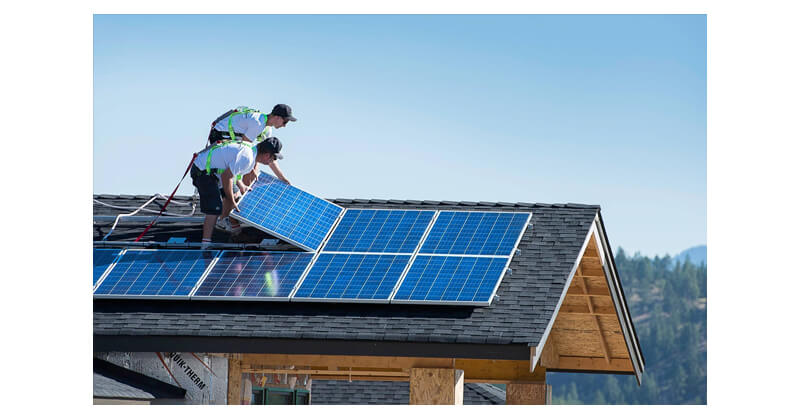Contents:
1. Permitting Process
2. Safety Standards
3. Zoning Regulations
4. Incentives for Solar Energy
5. Environmental and Economic Benefits
Conclusion
FAQs
As solar energy becomes an increasingly popular choice for renewable energy, Los Angeles County has put forth comprehensive regulations and guidelines for the installation and operation of solar panels. Understanding these codes is crucial for businesses and homeowners to ensure compliance and to fully benefit from solar power systems. This article explores the key aspects of the solar panel code for Los Angeles County, focusing on the permitting process, safety standards, zoning regulations, and incentives.

Los Angeles County requires permits for the installation of solar panel systems, both residential and commercial. These permits ensure that installations comply with local building codes and safety regulations. Here's an overview of the general permitting steps:
-
Application Submission: Installers must submit detailed plans, including electrical schematics, panel placement, and system specifications. These plans should adhere to California’s Building Standards Code (Title 24), which governs all building and safety standards.
-
Plan Review: The submitted plans are reviewed by the county’s Building and Safety Division. Reviewers will assess whether the proposed installation complies with fire safety codes, structural integrity, and electrical safety standards.
-
Approval and Inspection: Once approved, an inspector from the county will visit the installation site to verify that the installation meets all the required codes. This inspection usually focuses on wiring, rooftop panel placement, and the connection to the local grid.
Solar Panel Installation Process in Los Angeles County
| Stage |
Requirements |
Agency Involved |
Key Considerations |
| Permit Application |
Submit detailed plans (site layout, electrical diagrams) |
Building and Safety Division |
Must adhere to Title 24 standards for structural and electrical safety |
| Plan Review |
Ensure compliance with fire, structural, and electrical codes |
County Reviewers |
Includes review of California Fire Code and National Electrical Code |
| Approval and Inspection |
On-site inspection of the installed system |
County Inspector |
Inspector checks wiring, panel placement, and connection to the grid |
| Zoning Compliance |
Verify that the system follows local zoning laws |
Zoning Department |
Ensure proper setbacks, screening, and adherence to height limits |
| Incentive Programs |
Apply for tax credits, rebates, and net metering programs |
LADWP and Federal Government |
Federal ITC, LADWP rebates, and net metering programs available |
2. Safety Standards
Safety is a priority when it comes to solar panel installations, and Los Angeles County mandates that systems meet several safety guidelines:
-
Fire Safety: Solar panels must be installed in compliance with California Fire Code, which requires adequate space between the panels and the roof ridge to allow access for firefighters. Additionally, panels should be placed in a manner that does not obstruct emergency operations.
-
Structural Safety: The weight of the solar panels must be supported by the existing roof structure. This requires a thorough analysis of the building’s capacity to bear the additional load. In some cases, structural reinforcement may be necessary.
-
Electrical Safety: The system must follow the National Electrical Code (NEC) standards, particularly when connecting to the local utility grid. All wiring must be grounded, and the inverter (which converts the DC power from the panels into AC power for the home) must meet specific safety certifications.
Zoning laws in Los Angeles County regulate where solar panels can be installed. These rules are essential to maintaining the aesthetic integrity of neighborhoods and ensuring that installations do not obstruct public utilities or cause safety hazards. Key zoning regulations include:
-
Rooftop Solar Installations: Rooftop solar systems are generally allowed in all residential zones, provided that they meet setback and height requirements. Panels must not exceed the height limits established for the building, and adequate clearance must be maintained from the roof edges and property lines.
-
Ground-Mounted Systems: For larger solar panel arrays, ground-mounted systems are allowed in certain zones but are subject to stricter regulations. These installations must adhere to setback requirements, which may vary based on the zone and proximity to neighboring properties. Additionally, ground-mounted systems are often required to be screened from public view using landscaping or fencing.
Solar Projects in Los Angeles County
This line chart tracks the growth of solar installations in Los Angeles County over the years. You can update the data points in the data array to reflect actual statistics.
Los Angeles County offers various financial incentives to encourage the adoption of solar energy:
-
Federal Tax Credit: Residents can take advantage of the federal Investment Tax Credit (ITC), which allows for a tax deduction of up to 26% of the cost of the solar panel installation.
-
Net Metering: Los Angeles County is part of California’s Net Energy Metering (NEM) program, which allows homeowners to receive credits for excess electricity generated by their solar panels and sent back to the grid.
-
Local Rebates: The county occasionally offers rebates for solar installations through the Los Angeles Department of Water and Power (LADWP). These rebates are typically available on a first-come, first-served basis.

Installing solar panels not only helps reduce greenhouse gas emissions but also offers significant economic benefits. Solar energy reduces dependency on fossil fuels, leading to lower utility bills. Moreover, the property value of homes and businesses with solar installations often increases, making it a worthwhile investment.
The solar panel code for Los Angeles County is designed to facilitate the adoption of clean energy while ensuring that installations are safe, compliant, and beneficial to the community. Understanding the permitting process, safety standards, zoning regulations, and available incentives can help homeowners and businesses make informed decisions about solar energy.
FAQs
1. Do I need a permit for a small off-grid solar system in Los Angeles County?
Yes, even small off-grid systems typically require permits to ensure safety and compliance with local building codes, although the requirements may be simpler than for grid-tied systems.
2. Are there any restrictions on the type of solar panels I can install?
Los Angeles County generally allows most commercially available solar panels, but they must meet the safety and performance standards set by the California Energy Commission (CEC) and the National Electrical Code (NEC).
3. Can solar panels be installed on a historical building?
Yes, but additional review may be required to ensure that the installation does not negatively impact the building’s historical value or appearance. Special permits may be needed.
4. How long does the permitting process usually take in Los Angeles County?
The permitting process can take anywhere from a few days to several weeks, depending on the complexity of the installation and the workload of the Building and Safety Division.
5. Can I sell excess solar power generated by my system?
Yes, Los Angeles County participates in California’s Net Energy Metering (NEM) program, allowing homeowners to sell excess solar power back to the grid and receive credits on their utility bills.







